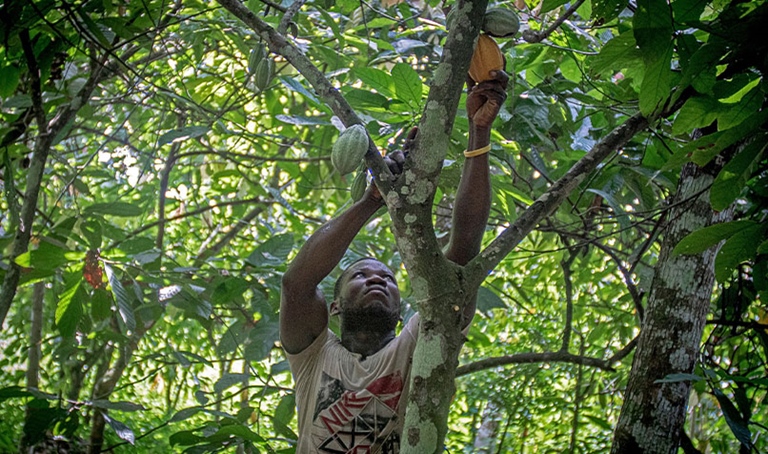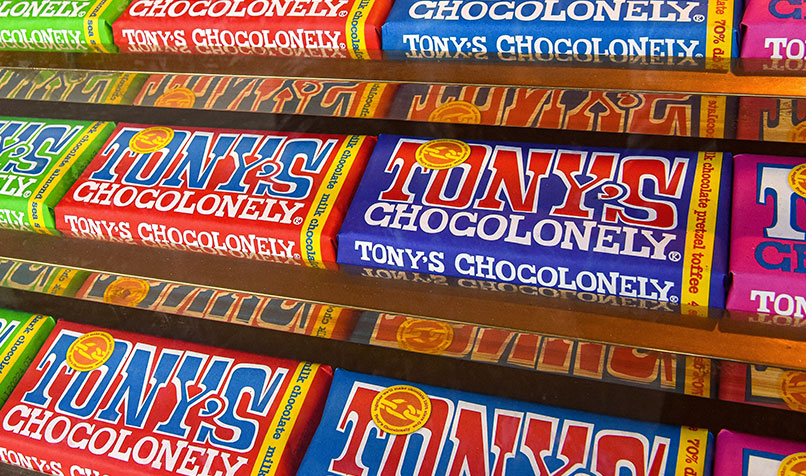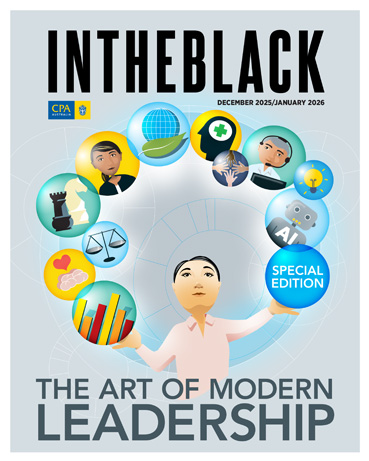Loading component...
At a glance
- The global chocolate industry is trying to solve a multitude of complex sustainability issues such as child labour and slavery, improved farming practices and fair pay.
- Building resilience in the industry requires a systemic rethink and collaborative action between governments, policymakers and industry.
- Single origin and bean-to-bar movements are helping with the traceability of beans and keeping growing numbers of chocolate lovers satisfied.
The global chocolate industry is built on an ever-growing market for sweet treats and palate-thrilling moments, but — by contrast — its environmental, social and governance (ESG) record has long left a metaphorical ‘bad taste in the mouth’ for many.
As focus on supply-chain sustainability and human rights gets sharper, and climate change continues, chocolate production faces mounting challenges.
Child labour and slavery have been pervasive in the cocoa industry. More than 90 per cent of production today still comes from smallholder farmers with limited resources and inadequate infrastructure. Currently, around 1.56 million children are estimated to be working illegally in cocoa in the West African countries of Ghana and Côte d’Ivoire, where nearly 60 per cent of the world’s cocoa is sourced.

World Cocoa Foundation (WCF) president Chris Vincent notes further challenges. “Unfavourable weather conditions, partly driven by climate change or the El Niño phenomenon, are negatively impacting growing conditions and yields, which are threatening the livelihoods of millions — particularly in West Africa.”
Changing land-use, mining and plant diseases are also affecting production levels, he says, with huge crop losses driving severe price volatility of cocoa beans. Prices hit an all-time high of nearly US$10,000 per metric ton in 2024.
It is an all-round unpalatable picture, except consumer demand for chocolate keeps increasing. Not everyone eats chocolate, but average annual consumption equals 1 kilogram for each person on the planet.
Industry revenue worldwide for 2024 was estimated at US$254 billion, and Statistica tips industry growth at 4.89 per cent to 2030.
New regulations — the European Union’s Regulation on Deforestation-free Products (EUDR) and the African Regional Standard ARS-1000 — pose high hurdles for compliance for small farmers as the industry and government press for progress on sustainability.
“Sustainability for the cocoa sector is not just a goal,” says Vincent. “It is a shared responsibility. These challenges call for innovation, alignment and commitment from all parties to secure a sustainable future for the cocoa value chain.”
Making new moves

Among the many cues for action, Vincent believes that “poverty is the root cause of child labour, so improving farmer income is key. Improved farming practices can help to address the challenges of climate change and reduce disease prevalence, while incomes can be enhanced through adapted and improved planting materials.”
Ironically, underpayment of cocoa farmers has also deprived them of the means to invest in climate resilience.
However, progress is underway. A new Framework of Action was signed in late November by the WCF, the governments of Côte d’Ivoire and Ghana, and the United States Department of Labor. Vincent insists that this is a “milestone in the intense process of coordinating and accelerating efforts to progressively eliminate child labour”.
"These challenges call for innovation, alignment and commitment from all parties to secure a sustainable future for the cocoa value chain."
Vincent sees major progress in the traceability and transparency within cocoa supply chains. “Companies and governments are adopting innovative digital tools to trace cocoa from farm to finished product, ensuring ethical sourcing and compliance with regulations. Programs promoting agroforestry, gender equity and farmer training are also helping to create more sustainable and inclusive systems.”
There is an upswing in the adoption of sustainability policies and reporting in preparation for the EUDR, Vincent notes, which outlaws products resulting from land-clearing and forest degradation and will be enforced from 30 December 2025.
The regional cocoa standard ARS-1000 also seeks to professionalise the cocoa industry and maintain access to European markets.
Who is "big chocolate"?
While the WCF sees public–private partnerships as vital for tackling massive complexities by bringing together governments and industry to drive a united front, squarely in the frame for scrutiny are major chocolate makers, also known as “Big Chocolate”.
Industry giants have launched varying initiatives. Some partner with well-known and longstanding certification schemes, such as Fairtrade and Rainforest Alliance, which set standards for cocoa production and provide incentives for farmers to adopt sustainable practices.
Nestlé’s Cocoa Plan is aiming for its responsible-sourcing core requirements to cover its entire cocoa supply chain by the end of 2025. The plan includes accelerating incomes of cocoa-farming households by focusing on productivity, child education, and agroforestry, with additional income underpinned by cash incentives.
In December 2024, the International Cocoa Initiative with support from The Hershey Company implemented a project for developing and testing strategies to address children's exposure to pesticides in cocoa-producing areas in Côte d'Ivoire.
Other big-name leaders in the quest to clean up the industry include Ferrero, Mars Wrigley and the German-based family company, Ritter Sport, according to the 2024 5th edition Chocolate Scorecard.
Coordinated by an Australian-based coalition of anti-slavery organisations, called Be Slavery Free, and compiled by a team of academics, the scorecard grades the world’s chocolate companies on sustainability issues and reports annually.
It ranks the policies and practices of chocolate traders, manufacturers, brands and retailers on key criteria, including traceability and transparency, living income, child labour, climate change and deforestation, agroforestry and pesticide use.
Doing it differently

Dutch disruptor brand Tony’s Chocolonely was called out for “special achievement” in 2024’s scorecard. The company was formed 20 years ago by journalists who uncovered widespread forced and child labour abuses in the cocoa industry, and determined the most effective way to change the industry was to join it.
Tony’s Chocolonely takes a bold approach to pursuing its mission to end exploitation, including symbolism — its chocolate bars are moulded into irregular pieces to highlight the industry’s unfair distribution of profits.
Several transformative initiatives are delivering material changes.
One of these is Tony’s 5 Sourcing Principles, is an ethical sourcing model for cocoa beans that tracks beans through the supply chain and, importantly, makes long-term commitments to pay farmers a fair price. Working with professional farming cooperatives and ensuring training for future productivity is key.

The company now provides income stability to around 20,000 farmers, reports Frits Snel, country manager for the Benelux region in Europe and beyond, and that number is set to grow to around 34,000 next year.
“The child labour prevalence rate at long-term partner cooperatives is a little below four per cent, much lower than the industry average of around 50 per cent,” Snel says.
To make a real difference, the company realised it needed to put a higher volume of beans through its sourcing model.
In 2019, it launched Tony’s Open Chain, a collaboration platform where other industry players can join the mission and source cocoa beans according to Tony’s Principles.
“Part of our roadmap involves inspiring the industry to join our mission,” Snel says.
"We are standing by cocoa farmers and paying them the living income reference price long-term, to provide them income security."
Among its “mission allies” are ice-cream makers Ben & Jerry’s, supermarket chains Waitrose and ALDI, and some big Dutch and Belgian retailers.
Despite challenging economic times industry-wide, Tony’s Chocolonely is “standing by cocoa farmers and paying them the living income reference price long-term, to provide them income security,” Snel says.
Nutella: From small family business to global spread
Changing tastes
An increase in consumer interest in the provenance of foods is a catalyst for improving environmental and social impact in the chocolate industry, with chocolate lovers’ appetites for “single-origin” or “bean-to-bar” varieties on the rise.
The movement, estimated to represent 5–10 per cent of global chocolate sales, is driving supply chain transparency as makers directly source beans from farmers, and factor in sustainable farming practices.
This “premiumisation” of chocolate is sustaining a nascent cocoa industry in Australia.
Leading the charge is Chris Jahnke, chair of CACAO Ltd, the peak body for the industry in Australia and Pacific Islands. Jahnke is also one of the founders of Charley’s Chocolate, which he co-founded with Lynn Jahnke when they started growing cocoa trees on their 400-acre property at Mission Beach in Far North Queensland in 2012.
The volume of cocoa produced in Australia is “just a blip” compared to the over 40 other bean-producing nations, Jahnke says. What the country lacks in quantity it makes up for in quality and clean ESG credentials, because regulatory checks are already in place for modern slavery and numerous other issues confronting major cocoa-producing nations.
On the quality front, Jahnke’s beans have twice topped the international Cocoa of Excellence awards, a prestigious global competition that recognises the work of cacao farmers around the world.
Showing global promise is the Queensland Department of Agriculture and Fisheries world-leading research into cocoa genetics, exploring the unique qualities of cacao beans grown in the Pacific region. Growers are found in Fiji, Vanuatu, Samoa and the Solomon Islands.
Australian beans are highly sought for their taste and because they satisfy the ethical sensibilities of bean-to-bar consumers, says Jahnke. His company’s waiting list for bean buyers runs to three years.
High labour costs, however, mean Australian beans are not on the shopping lists of price-driven confectioners with the brands that dominate supermarket shelves. “We have identified that Australian cocoa can only compete in the premium chocolate space, rather than in the commodity space,” says Jahnke. He predicts the future of the chocolate industry will follow a similar “premiumisation” path to the beer and wine industries.
“Our aim is to be price givers, not price takers,” Jahnke emphasises. The crisis in the chocolate industry may be tempered by consumers realising that less is more.

